Sedum care and growing guide: how to grow stonecrops for resilient ground cover and vibrant color
Grow versatile, easy-going sedum for charming fall flowers

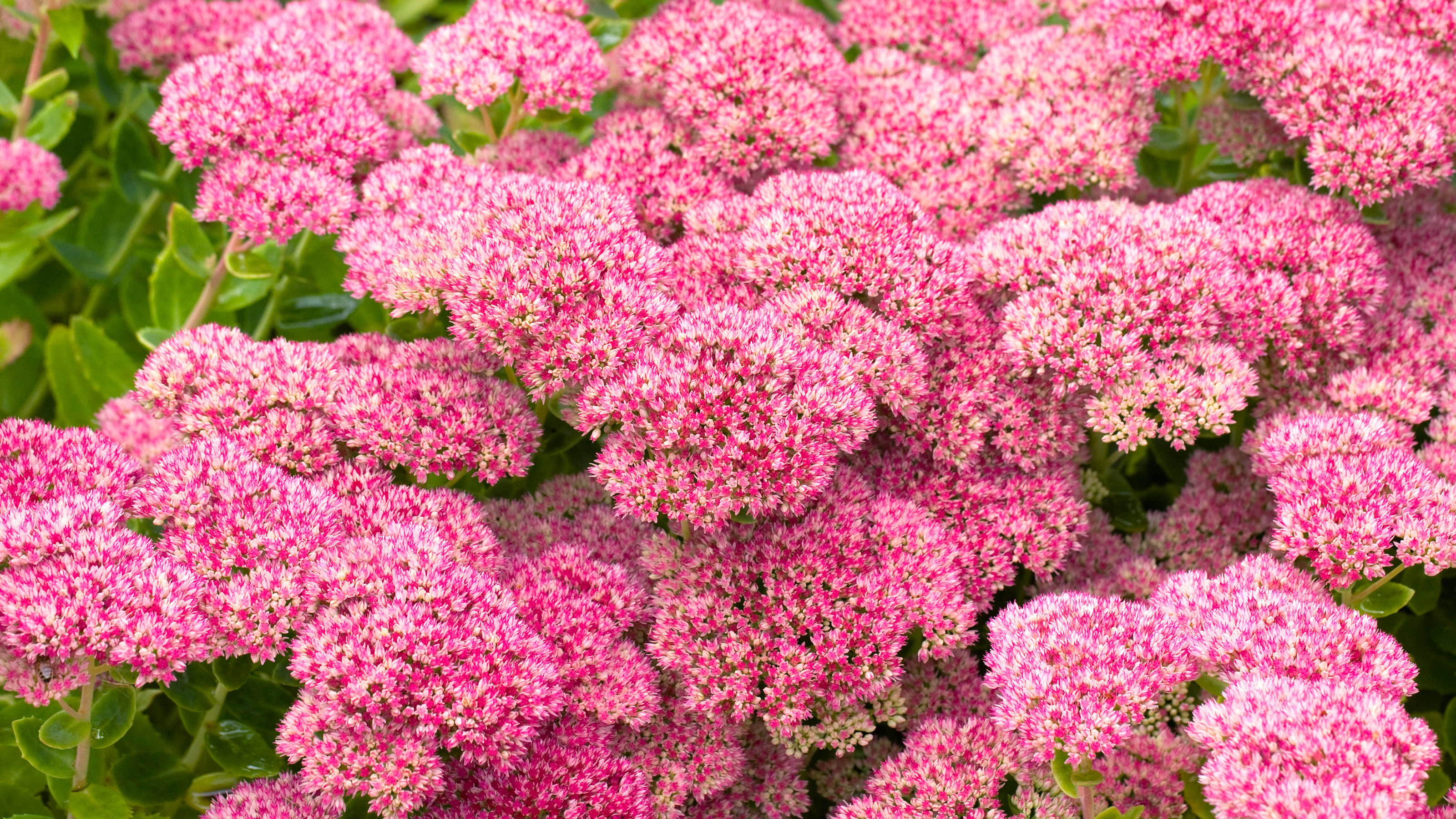
Sedum plants bring a host of variety, charm and longevity to any ornamental display. Small, sun-loving and easy to grow, the stonecrop (as it is also known) is a drought-tolerant hardy perennial that works equally well as ground cover and in rock garden arrangements.
Upright or floppy stems often sprout from a tight crown and carry distinctive succulent foliage. The fleshy leaves vary in shape from slender and almost cylindrical through cupped to flattened in shape. In color, the range runs from bright chartreuse and blue-green to magenta and deep purple. There are also some dramatic variegated varieties available.
The individual flowers are small and star-shaped, gathered into conical, domed or flat-topped clusters at the tips of the shoots. These are dynamic and can be as broad as 9in across. Not only are sedums some of the best ground cover plants, they are also excellent plants to grow if you are looking to attract pollinators to your plot. The blooms are popular with butterflies and bees, and the flower heads are often crowded with visiting winged insects.

Hylotelephium cauticola ‘Lidakense’ is a low-growing succulent ideal for walls and containers
Varieties of sedum
Sedums can be divided into two groups: rock garden varieties and hardy perennial flower garden types. There is some overlap between the two groups, but generally they are distinct and should be grown accordingly.
It's worth learning how to grow sedums as they work just as well in modest flower beds as the most ambitious, since they rarely exceed 2ft in height. The shortest varieties are mainly spring flowering, with the taller types flowering in summer and fall and sometimes collapsing, especially after heavy rain.
Flowers are mainly red, pink or white, with a few yellow flowered varieties. In many, the flowers progress through an intriguing series of color changes, and some later-flowering varieties turn straw brown late in the season.
Part of the appeal of this brilliant drought tolerant plant lies in its hardy nature. These plants withstand drought, frosts, poor soil, full sun and high temperatures, and still reward you with stunning colors and blooms.
Design expertise in your inbox – from inspiring decorating ideas and beautiful celebrity homes to practical gardening advice and shopping round-ups.
As long as you are clear about where you wish to plant your stonecrops, it will be easy to decide which type to choose.
- Rock garden sedums The smaller varieties of sedum are ideal plants for modern rock gardens, gravel gardens, drought gardens, raised beds, green roofs, troughs and as specimens in small pots. Some, including ‘Angelina’, spread quickly and make attractive low maintenance ground cover plants. Others, like ‘Ruby Glow’, develop a tight crown with floppy stems. Many of these rock garden types root where the stems touch the ground or from broken pieces of stem.
- Flower garden sedums Hardy perennial flower garden types are derived from two species, Sedum spectabile and Sedum telephium. These are indispensable plants for late summer and fall color, and essential plants for pollinators, providing nectar for late season insects. The clumps can become so crowded with flower stems that they lean outwards and may need support.
Scientists have been looking closely at sedums in recent years, and have decided that some are so different they require different names. So although many rock garden types are still called sedums, most hardy perennial flower garden types are now called Hylotelephium.
- Shop sedum plants at Bluestone Perennials
- Shop sedum plants at Nature Hills
- Shop sedum plants at Burpee
- Shop sedum plants at Monrovia
- Shop sedum plants at Amazon
- Shop sedum plants at Proven Winners
When and where to plant sedum
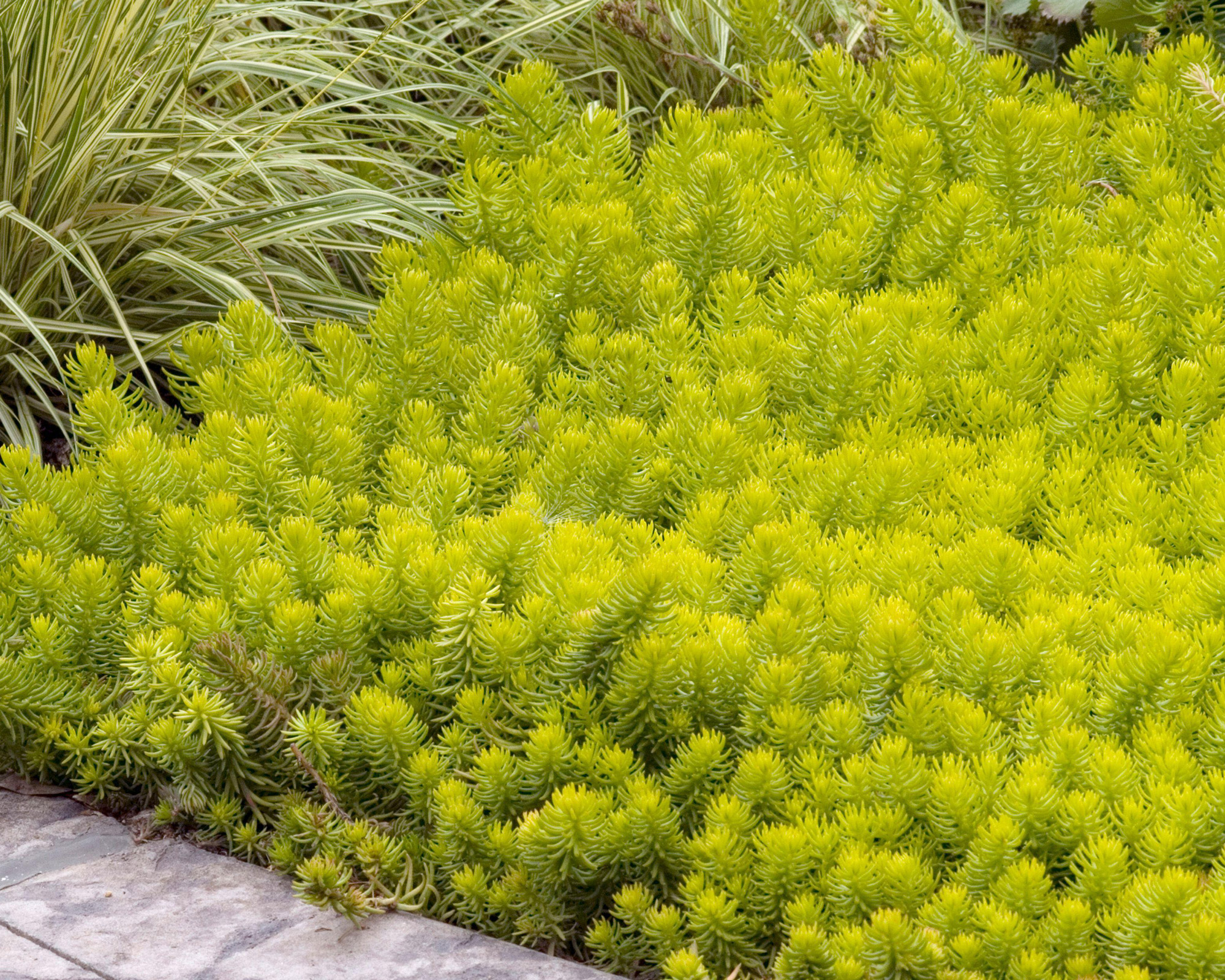
Evergreen, mat-forming Sedum rupestre ‘Angelina’ has yellow flowers in summer
Sedums enjoy full sunshine and are ideal plants for rockeries. In the northern hemisphere they do best in a west- or south-facing garden or a sunny border. Shady or covered spots may cause problems: when they are planted under trees, sedums can become thin and spindly, dark-leaved varieties lose coloring in stems and leaves, and flower heads become small.
However, sedums are not fussy: these plants appreciate low-maintenance patio arrangements and they are happy growing around pathways and filling out in quiet corners.
These plants can also work well in vertical garden ideas that incorporate walls and rocks. They like to clamber up stone walls. But again, just think about exposure to sunshine. Plants shaded from the side, in the shadow of a fence or wall – where the plants are in good light but not in the sun – will not thrive in the same way as those in full sun. Also, plants tend to do best if planted in the spring or in the fall.
Rock garden sedums such as compact ‘Lidakense’, with its purple-tinted blue-green leaves and pink flowers, work well in terracotta pots, garden planters and troughs, as well as raised garden beds. The more vigorous ‘Angelina’, with its slender chartreuse foliage and yellow flowers, is good for low ground cover in a gravel garden and works well for xeriscaping.
Choose taller sedum varieties for mixed or perennial plantings, flower gardens and pollinator plantings. Try ‘Autumn Joy’ (‘Herbstfreude’) with its pink flowers, or ‘Red Cauli’ with its deep foliage and bright blooms. This type does well with the fluffier growth of perennial asters. And the SunSparkler Series, with its long season of dynamic foliage and flower tones, is ideal where you need neat plants to give months of color.
How to plant sedum
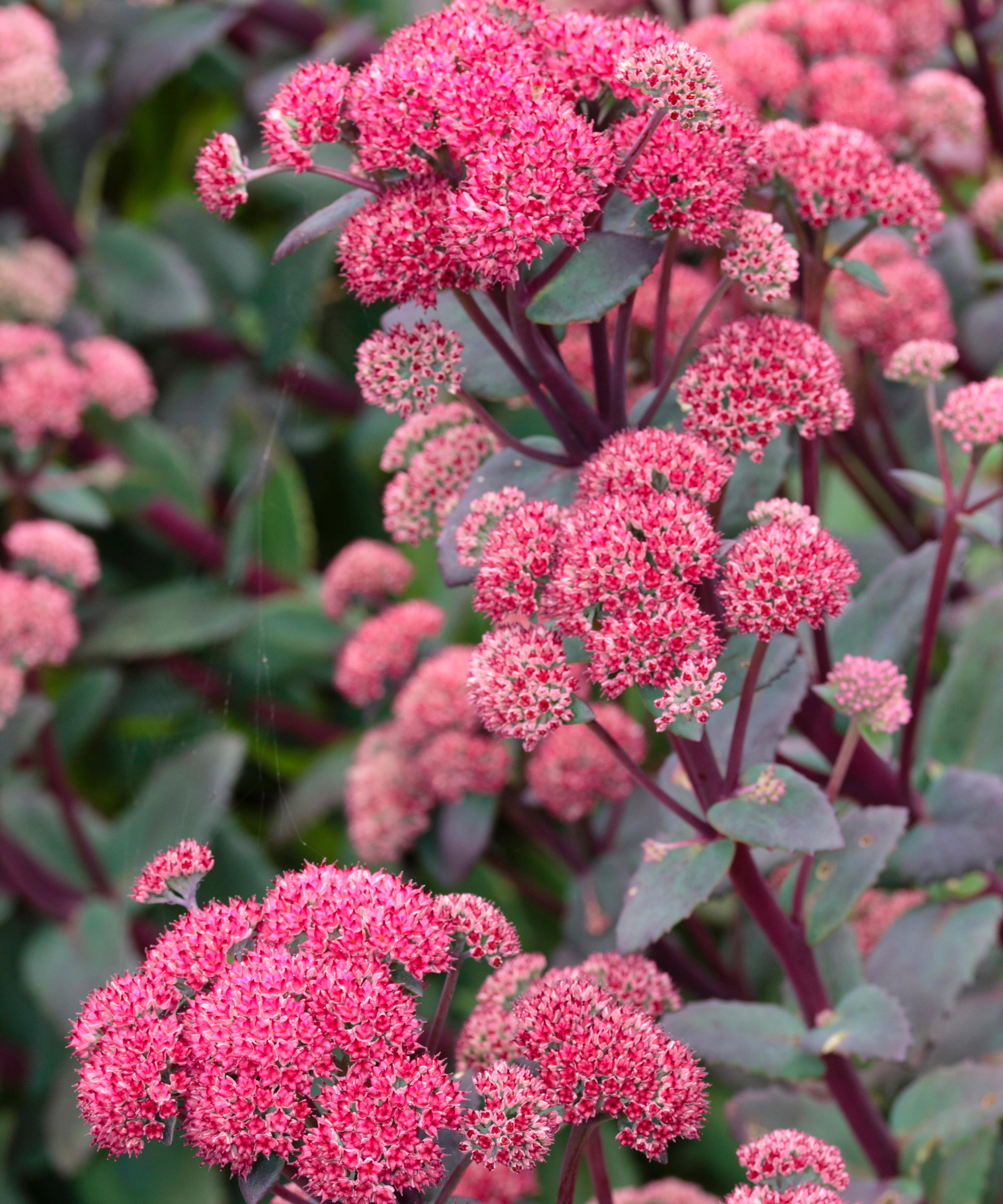
Taller varieties such as ‘Red Cauli’ will benefit from support in the form of canes or frames
Good drainage is critical when planting sedums. Whether you are looking to add some stonecrops to sunny garden borders or inventive container gardening ideas, make sure the roots of these plants aren’t exposed to extended periods of excess moisture.
In heavy clay soils or waterlogged conditions, the roots and crowns of sedum plants tend to rot. Adding gravel to improve drainage can help, but in moist conditions it is wiser to choose from the many plants that enjoy damp soil.
'Virtually all sedums require a well-drained site, and soil of low to moderate fertility is preferable,' says the American Horticultural Society. Sandy or gravelly soil is preferred for sedum planting. If you are unsure about the level of drainage in your soil, you could try adding a little sand or gravel to your existing beds and borders to guarantee better results.
Unlike many plants, sedums are unhappy in rich, fertile soil and when overfed. These conditions encourage soft and leafy stems that collapse under the weight of flowers or in a rainstorm.
Soil that is too rich also seems to encourage mildew. So if in doubt, err on the side of ‘cruel to be kind’ and you won’t go too far wrong when planting stonecrops.
No special planting technique is necessary with sedums, although it is important not to plant too shallowly or too deeply. Setting the crown a little below the soil level is best. If you are looking to plant bare-root plants, be sure to encourage the soil to filter in among the roots.
Sedum care tips
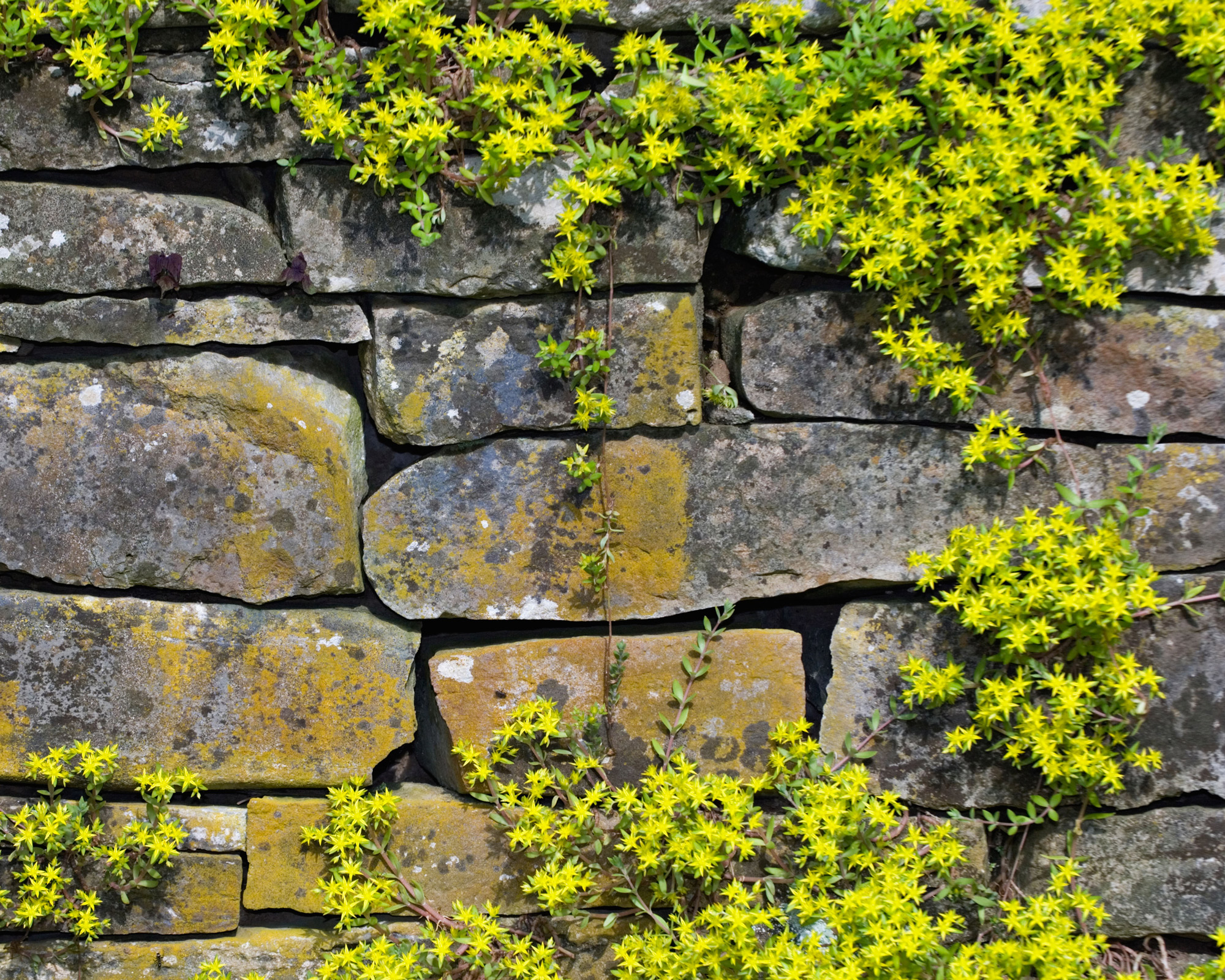
Sedums thrive in full sun and are often spotted scrambling up walls and terraces as well as rockeries, pots and borders
Stonecrops are relatively low maintenance so you don’t need to give them much attention. Just a few sedum care tips here and there will ensure healthy, prolific growth year after year.
Rock garden sedums appreciate an annual mulch of gravel. This ensures that excess moisture drains away from the crowns of plants and also shows off the tones of flowers and foliage well. A good mulching is also beneficial to hardy perennial flower garden sedums. In drought gardens, gravel is a good choice.
Unlike most hardy perennials, sedums do not usually die out in the centers as the clumps slowly expand. Instead, the clumps may become so crowded with flowering stems that those at the edges may be forced outwards. In this situation, grow-through plant supports will be especially useful.
Because sedums tend not to fade away in the centers of the clumps, they do not usually need lifting and dividing every few years to ensure that they retain their vigor.
Finally, although this may seem counter-intuitive, it’s a good idea to avoid deadheading your sedums. You will find that the plants turn an attractive pale brown in the fall. Cut the plants down in late winter.
How to propagate sedum plants

Sedums tend not to fade away in the centers of clumps
If you are looking to make more free plants, sedums are very easy to propagate. You can take cuttings from plants once they are established and thriving. The stems of many even make roots when stood in a glass of water. Just cut pieces of stem 3-6in long.
Nip the leaves off the lower half of the stem, then place the stem in water up to just below the lowest leaf. Roots will often develop quickly. As soon as they are visible, the rooted cutting can be planted in a pot or in your garden.
Spreading and trailing varieties often make roots where the stems touch the ground. Rooted pieces can simply be snipped off, then potted or planted. In the same way that propagating succulents often works, large-leaved sedums can be propagated by using individual leaves.
Cut a stem into pieces with one leaf attached to an inch of stem. Fill a 3in pot with fresh damp potting soil. Push the stem into the soil so that the base of the leaf rests on the soil. Shoots and roots will develop from around where the leaf joins the short piece of stem.
Sedum problems and how to solve them
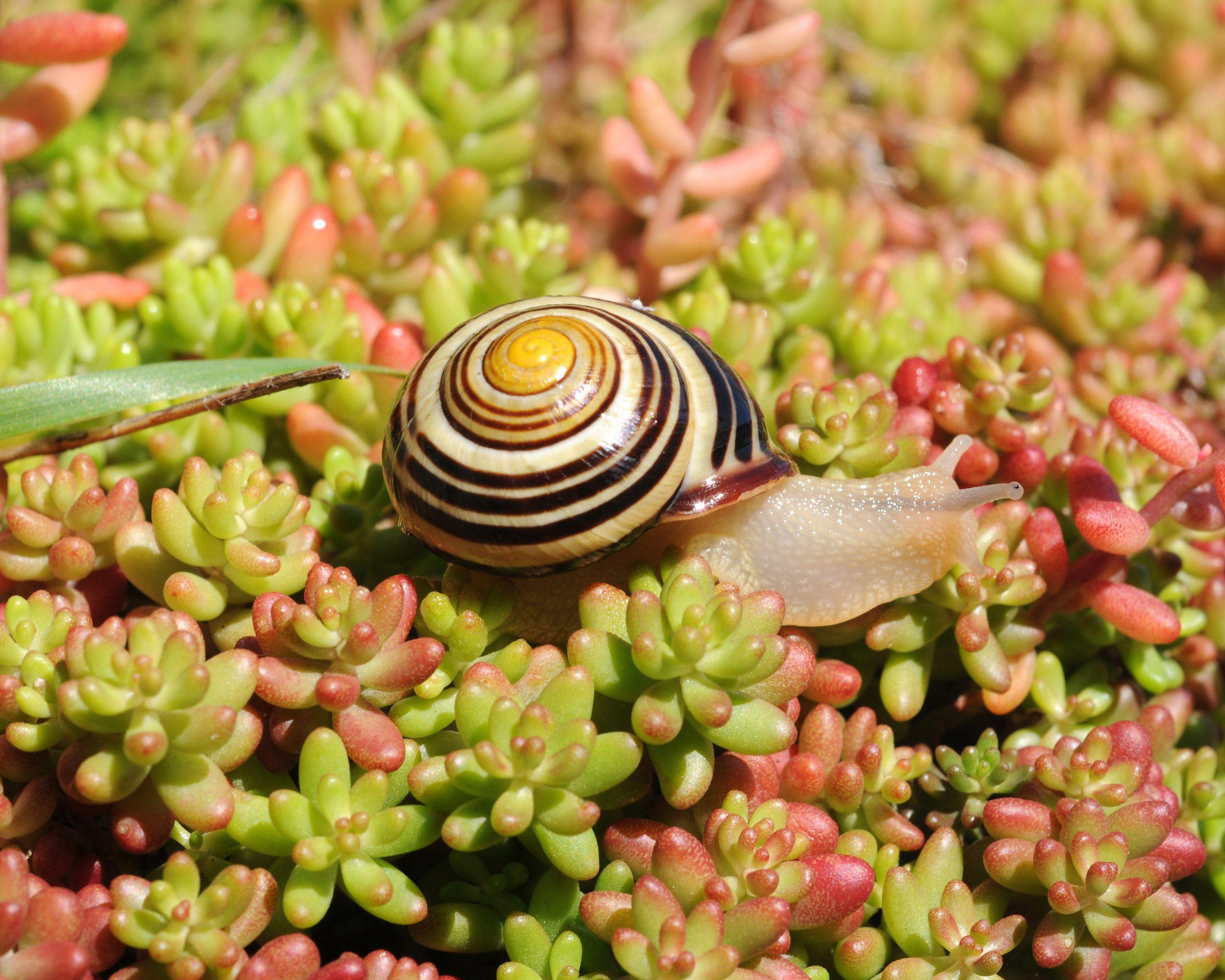
Keep an eye out for slug and snail damage in spring
Although stonecrops don’t cause too many issues, they are not entirely pest-free. Sedums suffer from many of the same problems as other plants. Slugs and snails like to feast on the emerging spring shoots, while aphids suck the sap of more mature growth.
If you want to get rid of snails, the good news is that modern organic slug and snail treatments (pellets or water-on remedies) are effective. Furthermore, sedums tend to prefer the hot, dry conditions that slugs and snails hate – so you aren’t likely to see extensive damage.
For those looking to get rid of aphids, modern organic treatments are also effective. However, there is no need to apply preventative sprays. Just watch for clusters of aphids on the plants and use your preferred approach.
Other problems, such as mildew and rotting at the crown, are usually caused by the soil being too wet. To avoid this issue, water sparingly and only as required.
FAQs
Are sedum plants drought resistant?
Yes, most sedum plants will grow naturally in dry climates and dry situations. These include rocky hillsides and screes, and on cliffs. The leaves and stems are adapted to store water. The leaves in particular are noticeably succulent.
Sedums are perfect plants for low rainfall areas, for dry gardens and xeriscaping projects. They are also well suited to green roof planting projects. Not to mention they are ideal plants for garden walls, where the plants will root into cracks.
As versatile as they are, stonecrops are sadly not deer resistant. They are not the most popular plants with deer, but sedums will be eaten by deer in most gardens.
The experts at New Jersey Agricultural Experiment Station have compiled a ratings system that divides plants into four categories from ‘Rarely Damaged’ to ‘Frequently Severely Damaged’. Sedums are rated in the third group as ‘Occasionally Severely Damaged’.
Because they are not exactly the most deer resistant plants, sedums will need protection if you know you have spotted these pests in your yard. Deterrent sprays can work well for some gardeners. However, one guaranteed way to stop deer from eating your stonecrops (and other plants) is to erect a fence.

Graham Rice is a garden writer who has won awards for his work online, and in books and magazines, on both sides of the Atlantic. He is a member of a number of Royal Horticultural Society committees and the recipient of the 2021 Garden Media Guild Lifetime Achievement Award. He gardened in Pennsylvania for 20 years, but has recently returned to his native England.